Reading Time: 9 minutes
Want to catch the biggest fish of your life alongside whales, eagles, and otters? All the while surrounded by the incredible nature of an actual fjord? We thought so. Halibut Fishing in Seward, Alaska is a bucket list experience that some anglers go weak at the knees just thinking about. And we can see why!
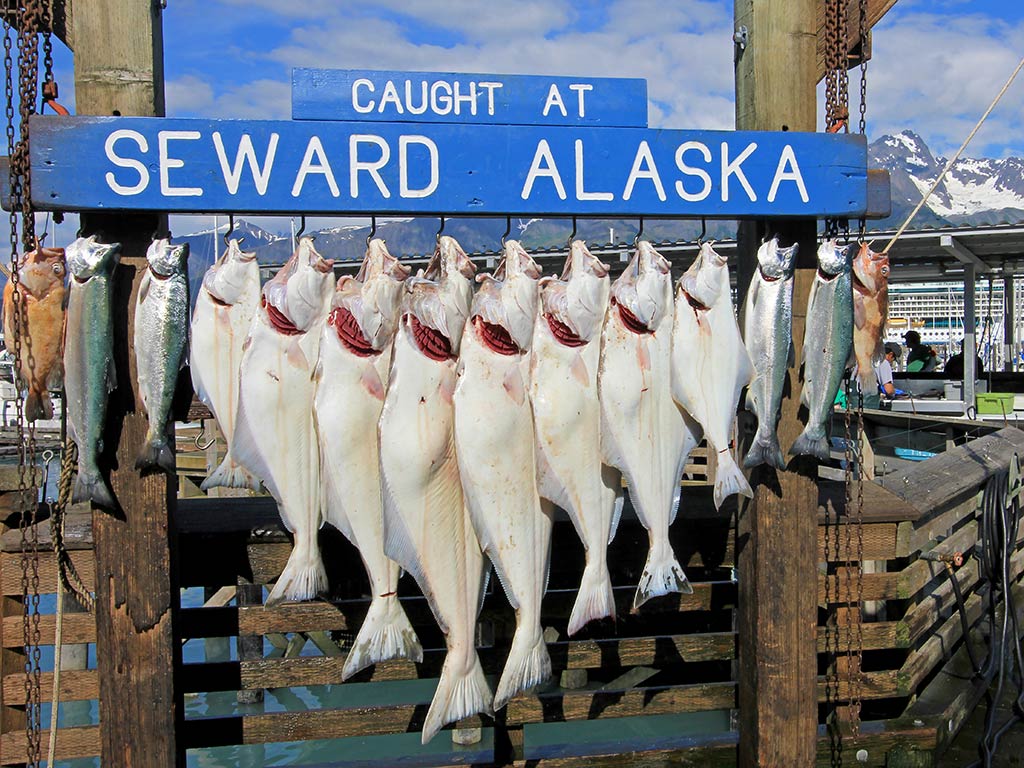
Seward is one of Alaska’s most popular fishing destinations for a reason. While it’s easy to reach from Anchorage, it’s a world away in spirit. This is the gateway to Kenai Fjords National Park and it showcases nature in its most beautiful form. It’s also home to large numbers of Pacific Halibut – some of the largest and most delicious fish in the world.
Partly because of the size of the fish and partly because of the habitat, Halibut fishing is unlike any other experience with a rod and reel. We’ll walk you through the ins and outs of catching them in Seward, using tips and tricks gathered from seasoned charter captains. Read on to prepare for the fishing trip of a lifetime, and check out some qualified local guides in the area, too.
Introducing Seward’s Famous Halibut
Hippoglossus Stenolepis – Pacific Halibut to you and me – are famous for two things. First, they’re the largest Flatfish in the Pacific. Second, they’re phenomenally tasty. Put these two together, and you can see why so many people like to catch them. While there are strict catch limits, these fish are so big that, even by landing just one, you’ll be sorted for fish filets for months!
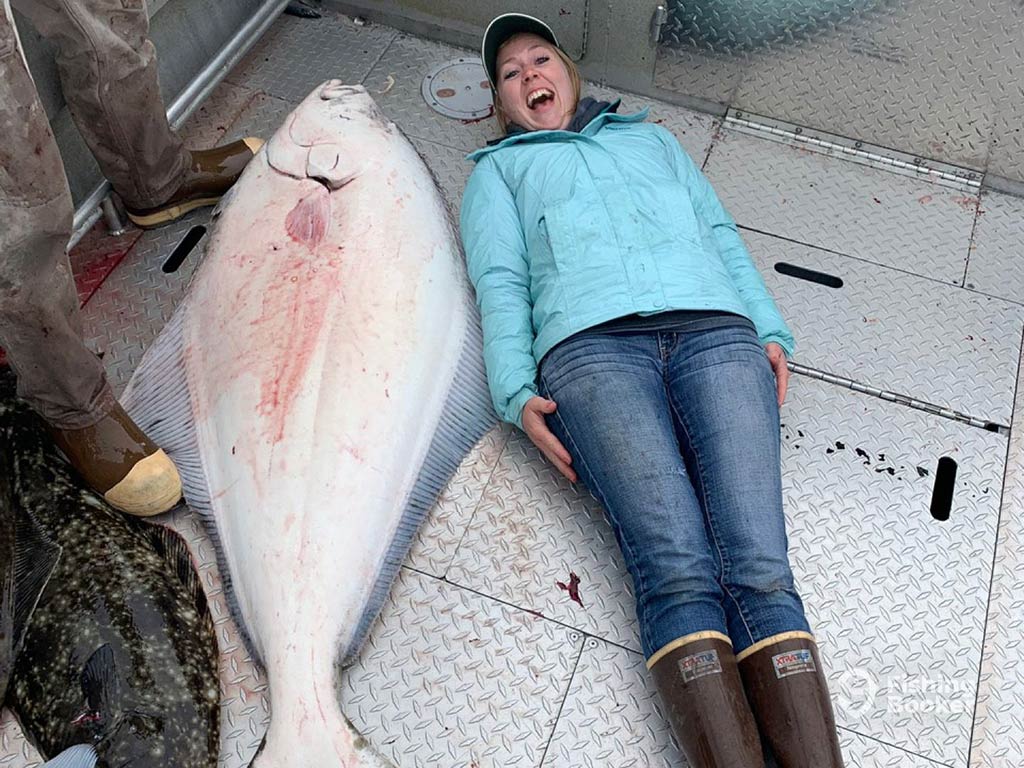
Photo courtesy of Blue Ice Alaska Charters – Yanichka
When we say they’re big, we mean it. The largest Pacific Halibut caught on a rod and line was over 470 pounds. It’s rare to catch slobs over 200 pounds, but if it’s going to happen anywhere, it’s likely to be out of Seward. While the majority of fish are “Chicken Halibuts” in the 20–40 lb range, people really start to brag when they reel in “Barn Doors” over 100 pounds.
Don’t worry if your fish isn’t the biggest, though – most people agree that the smaller ones are the most delicious. In fact, it’s becoming increasingly common to release bigger breeder fish. Because Halibut don’t have a swim bladder, it’s easy to do this without hurting them.
It’s not just their size that makes Halibut interesting. It’s also their unique looks. Like Flounder, these Flatfish are speckled and dark on one side and completely white on the other. They also have funny-looking faces, with both eyes poking out from the same side of their flat head. They spend most of their time on the bottom of the sea, and their unusual appearance keeps them hidden while allowing them to peer up at their prey from the seabed.
How to Fish For Halibut in Seward
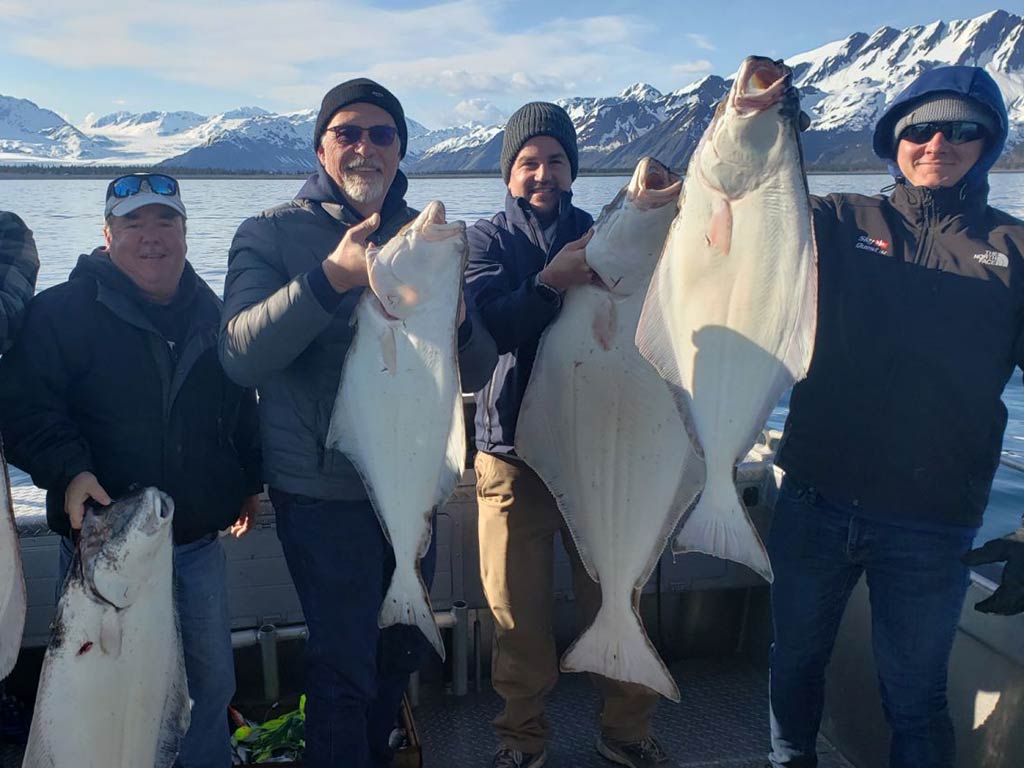
Photo courtesy of Blue Ice Alaska Charters – Yanichka
When you’re fishing for anything as big as a Halibut, you need special gear and expert knowledge of the local waters. That’s why the majority of visitors who manage to reel one in do so under the instruction of a charter captain.
Once you find yourself a guide, you’ll take quite a long boat ride out through the fjord to the best Halibut waters. This can take as much as 2–3 hours in each direction, so be prepared to set aside a whole day for this experience. Once you get there, you’ll drop your bait, using a weight to position it towards the bottom of the water. Depending on the conditions, your captain will then either anchor the boat or set it up for drift fishing. Here’s what happens next.
Drift Fishing
Drift fishing for Halibut works well when the current is too strong for you to anchor up. This technique involves turning the boat’s engine off and allowing it to “drift” and move freely with the current. When you fish this way, you can cover a lot of ground, which helps you scope out good spots and increase the number of areas you fish.
Be careful, as the movement can make your fishing lines tangle up if several people are fishing at once. Some captains will limit the number of lines that can be in the water at once because of this.
Anchoring
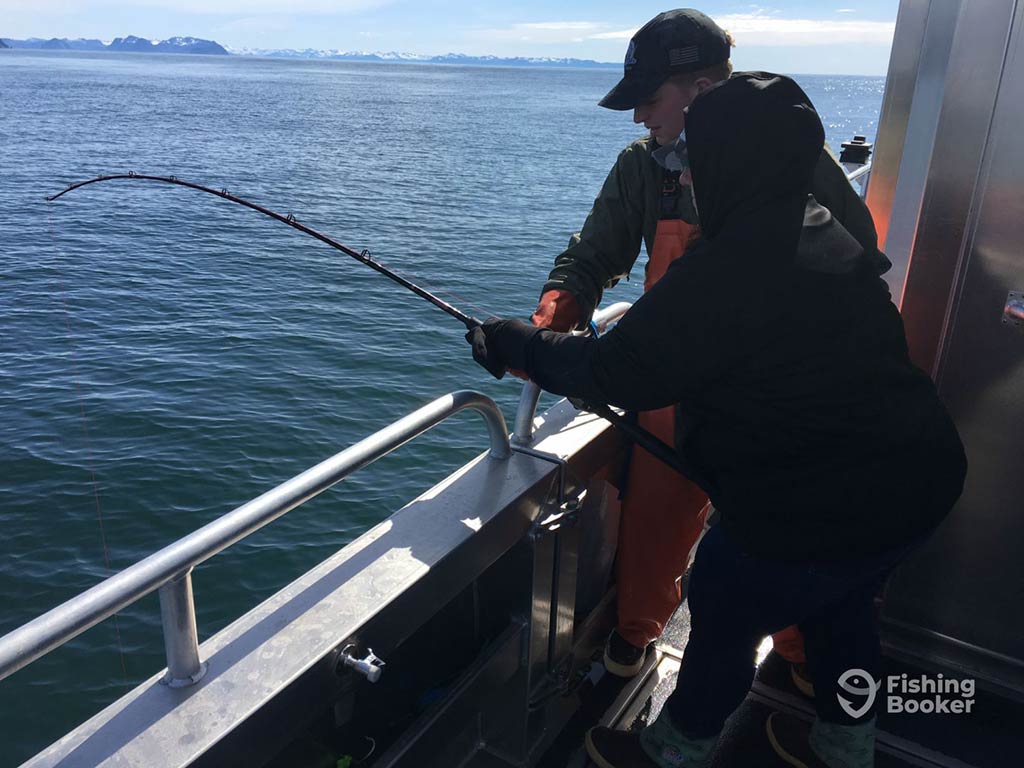
Photo courtesy of Saltwater Safari Company
It’s more common – and often more effective – to pick a spot and set the anchor. This is a real waiting game but it can result in very large fish if you’re patient enough. Some of the biggest catches in Resurrection Bay were the result of over 2 hours of sitting anchored in the same spot! That’s partly what makes Halibut fishing in Seward so different from charter fishing anywhere else in the world.
This technique works because Halibuts hunt by scent. The longer your bait is in the water, the further the currents can disperse its trail. Halibuts pick up this scent like a beacon and slowly make their way towards it. So probably the worst thing you can do after an hour and a half of sitting in one spot is demand that your captain move the boat! Trust that they know what they’re doing, and enjoy the beautiful surroundings instead.
You can make your spot even more alluring by dropping a mesh chum bag near your baited hook. Just be sure to keep it attached to a weight – or the anchor itself – so it doesn’t drift away.
Fish On!
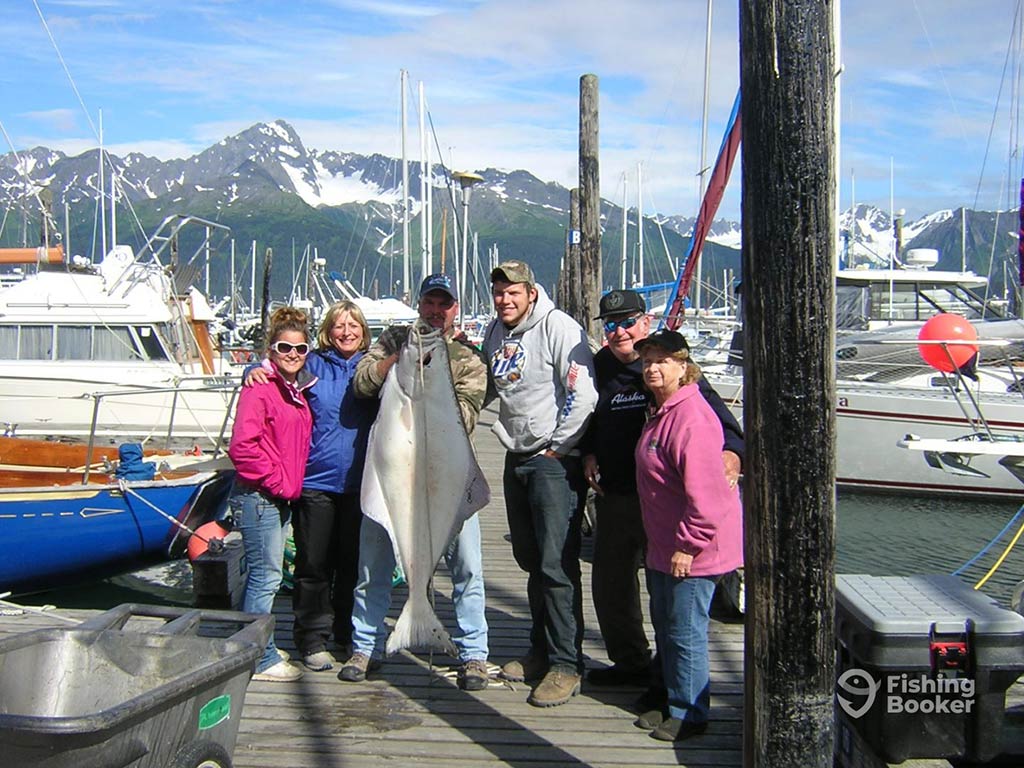
Photo courtesy of Fantasea Charters
No matter whether you’re drift fishing or anchored up, you’ll know it when a Halibut takes your bait. Just keep an eye on your rod. If the tip starts moving up and down, it’s probably because there’s a Halibut on the other end of the line.
Most people in Seward fish for Halibut with circle hooks. Unlike traditional j-hooks, these lodge themselves in the corner of the fish’s mouth without you needing to set the hook. Just leave the rod alone, wait for the fish to start swimming off, and then you’ll be ready to start reeling them in. Depending on how big the fish is, this could take you a while! Halibut don’t try to shake the hook in the way some other sport fish do but they can try to dive deeper into the sea and will always give your arms a workout.
Once your fish surfaces, the captain or deckhand will help you bring them into the boat. Because they’re so big and strong, this is probably the most difficult part of Halibut fishing. They’ll either use a net or a gaff to get hold of the fish, and then they’ll knock the largest ones out – or even shoot them! Otherwise, these enormous slabs of muscle could do some serious damage.
Kayak Fishing
If hauling a giant Halibut into a sportfishing boat sounds too easy, how about this? Try tackling this beast of a Flatfish aboard a tiny vessel that’s as easy to drag around as it is to tip over. Believe it or not, kayak fishing for Halibut is getting more popular every year – and Seward is one of the most popular places to do it.
Seward’s waters are relatively calm compared to other Alaskan Halibut fishing hotspots, which makes it a good place to give this crazy challenge a shot. Just head into Resurrection Bay in a specially-rigged kayak, bring a fish finder, and drop your bait. Once you hook a Halibut, it will probably tow you a fair distance before you get it to the boat, so be prepared for a long ride back!
Seward Halibut Fishing Setup
Fishing for any sea monster requires specialized gear. Halibut is no exception. The setup you’ll use in Seward is slightly different from what you’ll need in other Alaskan hotspots, but the essence is similar. Big rods and reels, large bait or lures, and a strong line are all important. Here are the essentials you’ll need to get started.
Equipment Basics
Fishing for Halibut requires power, leverage, and depth – you certainly won’t be casting for these brutes. So, pick a sturdy 6–6.5′ rod and a strong reel that can hold up to 300 yards of heavy fishing line. Lever drag reels are popular for Halibut as they allow you to adjust the drag easily if they decide to dive down to escape the hook. Finally, add a braided line in the 80–100 lb range, along with a sinker.
Seward anglers usually use 1–3 lb sinkers, which will get the bait or lure to the right depth without breaking your back as you reel it back in. This is partly what makes Seward Halibut fishing so appealing. Other places with stronger currents and riptides need heavier sinkers, making fishing that much harder.
Bait
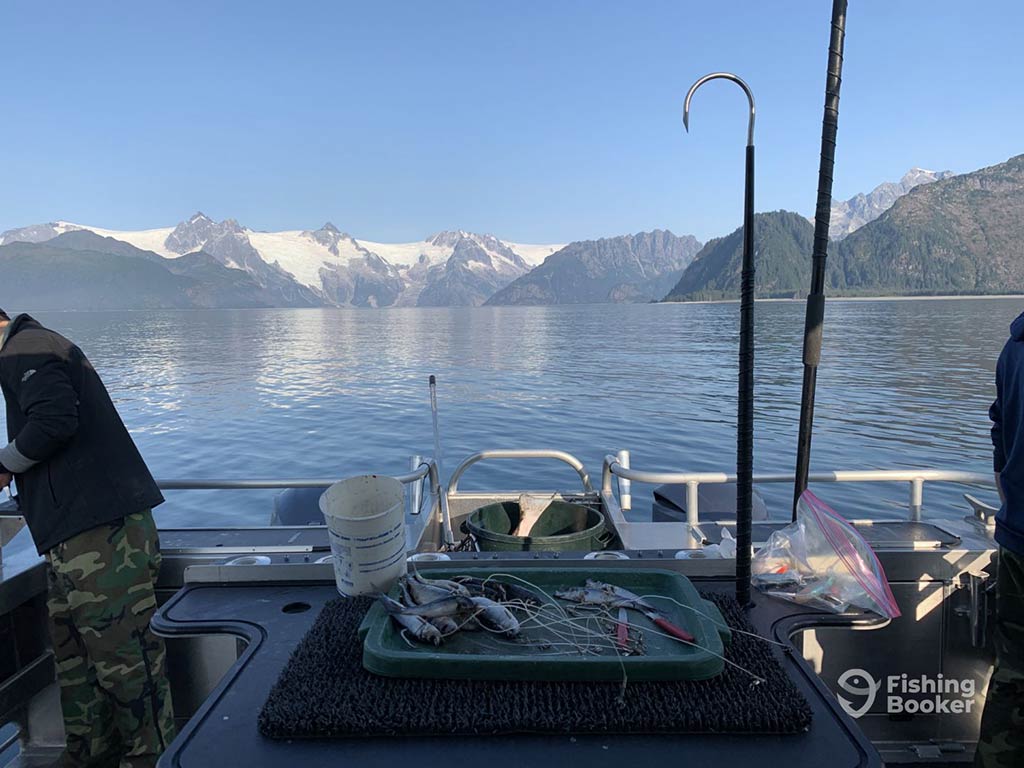
Photo courtesy of Saltwater Safari Company
Most people fish for Halibut with live or cut bait. This could be herring, the head or belly of a salmon, or an octopus tentacle. One of the most effective setups mixes irresistible herring with hard-wearing octopus – a combo that lures Halibut in while staying firmly attached to the hook.
Wherever you fish – and whatever you’re targeting – you’ve probably heard the saying: “the bigger the bait, the bigger the fish.” Seward is no different. If you’re set on hauling in a barn door Halibut, we recommend using a whole large herring.
Lures
Bait isn’t your only option, though. Jigging for Halibut is really popular in Seward. Once again, this is partly thanks to the area’s relatively slow currents, which make it possible to use jigs effectively.
Most Seward captains who use jigs opt for rubber curly-tail jigs or metal jigs like diamond or viking jigs. Luhr Jensen’s Crippled Herring is very popular. Some people choose to use gels or sprays to add scent to their lures, but this isn’t essential.
Seward Halibut Fishing Spots
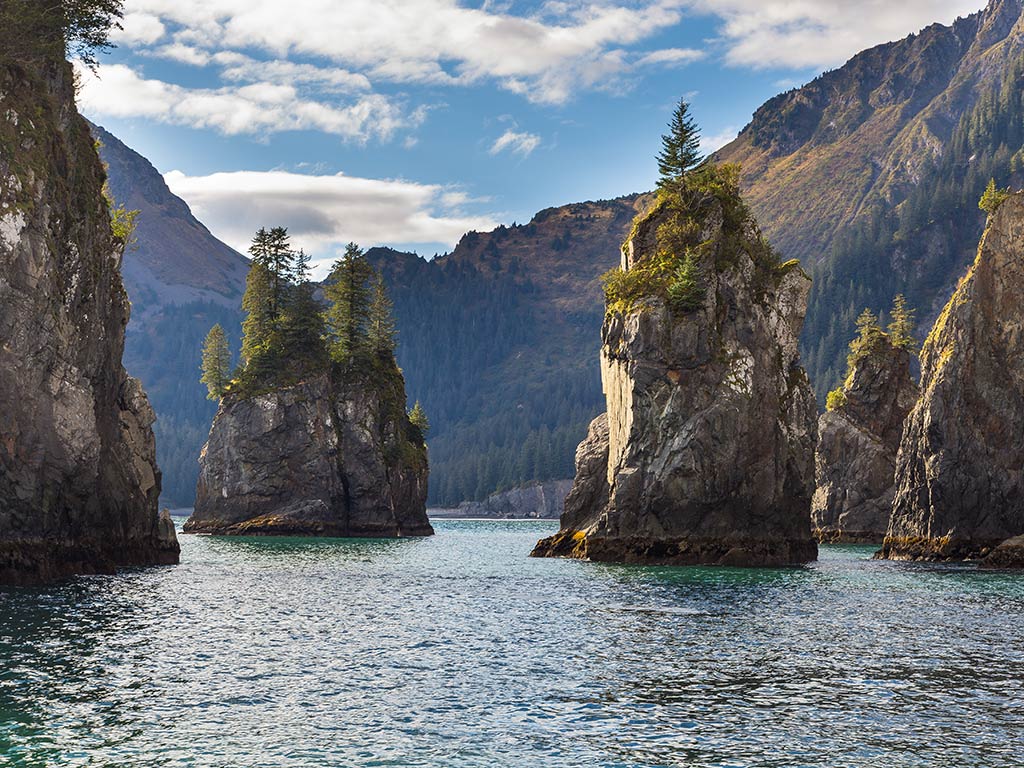
The best fishing spots in Resurrection Bay are a couple of hours away by boat from Seward. But don’t let that put you off. The whole trip will take place in some of the most amazing scenery in the world, with the Kenai Fjords National Park serving as the backdrop. You’ll head out towards the craggy outcrops and deep water crevices where Halibut hunt their prey, which can be anywhere from 50 to several hundred feet deep.
Most fishing charters stick to the productive waters of Resurrection Bay. Rugged Island, Thumb Cove, and Fox Island are some of the most popular spots. However, a few adventurous boats head out southeast to the deeper waters of Prince William Sound around Montague Island.
This is a serious boat ride away but can be well worth it. As well as upping your chances of a barn door Hali, these longer trips will bring you close to even more amazing sea life. Orcas, porpoises, humpback whales, sea lions, and many more species swim above the Halibut’s underwater kingdom.
When to Go Halibut Fishing in Seward
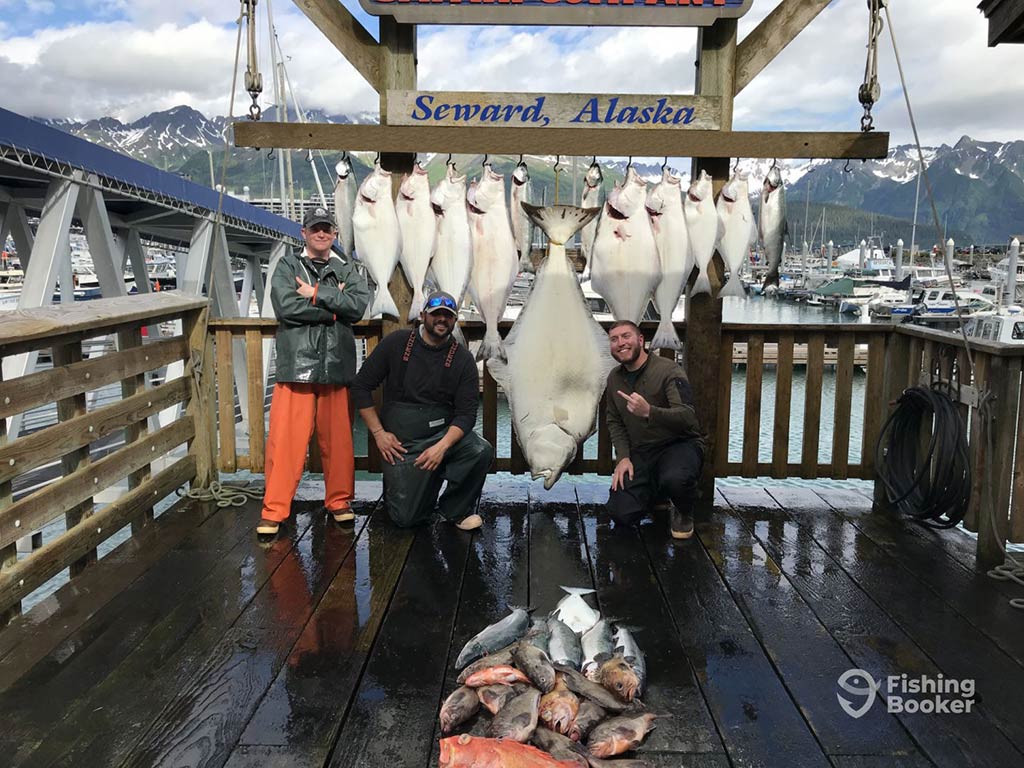
Photo courtesy of Saltwater Safari Company
Halibut are migratory fish that can travel hundreds of miles every year. Luckily for visitors to Seward though, these popular fish are in town just at the same time that everyone else is – from May to September. Smaller “chicken” Halibut swim the local waters all year round, but most charters only operate when the big breeding females are close to town – from spring through fall.
If you’re planning to come Halibut fishing in July or August, it pays to be organized. This is peak tourist season and popular dates can sell out a year in advance. Don’t worry if you didn’t get a spot, though. May, June, and September all offer amazing Halibut fishing and there’s a little less pressure from charter boats at this time of year, too.
Whenever you come, be ready to be flexible – adverse weather has put paid to many a Resurrection Bay fishing trip in the past.
Seward Halibut Fishing Regulations
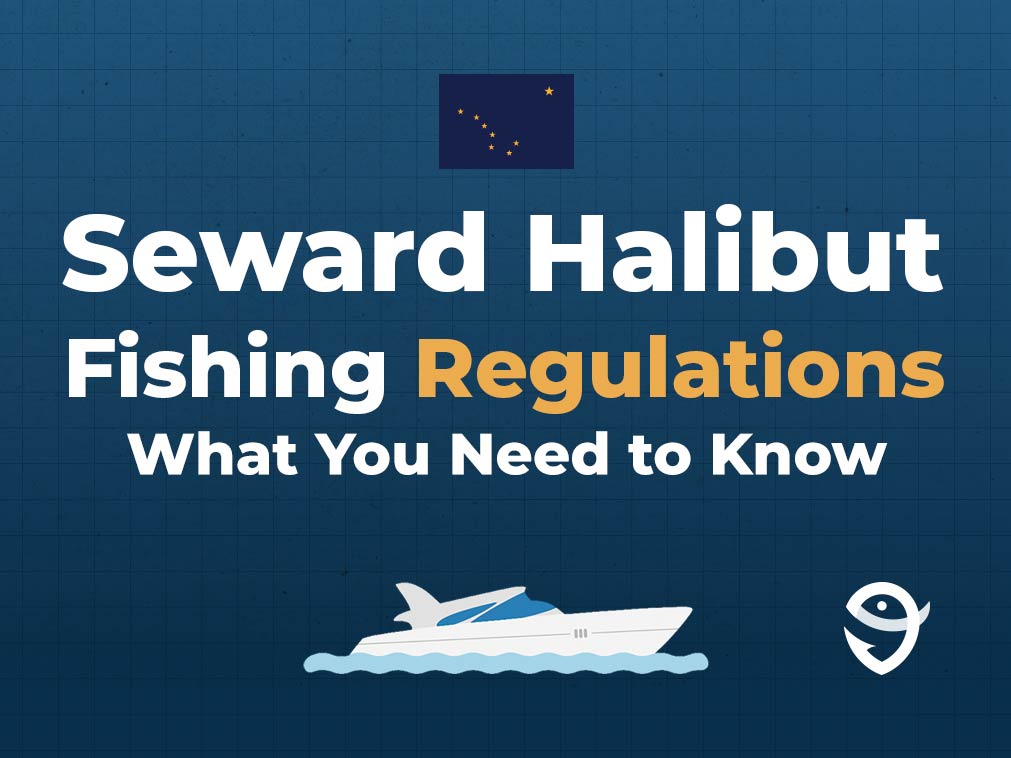
Every Alaska resident over the age of 18 – and every non-resident over 16 – needs a sportfishing license in order to fish for Halibut. You can purchase single-day, multiday, or annual licenses depending on just how determined you are to catch that slab of a lifetime. Bring a printed copy of your license with you on your charter trip, and you’ll be good to go.
If you’re lucky enough to book onto a Halibut and Salmon combo trip, you’ll also need a Salmon stamp.
Seward is in the Southcentral Alaska jurisdiction for fishing regulations, but Halibut are managed by the federal government. Halibut fishing is closed in February while the fish are spawning, and there are often other periods or days when you can’t harvest them. These regulations – as well as personal catch limits – change every year. It’s a good idea to check the specifics with the Alaska Department of Fish and Game before you hit the water.
Ready? It’s Time to Go Halibut Fishing!
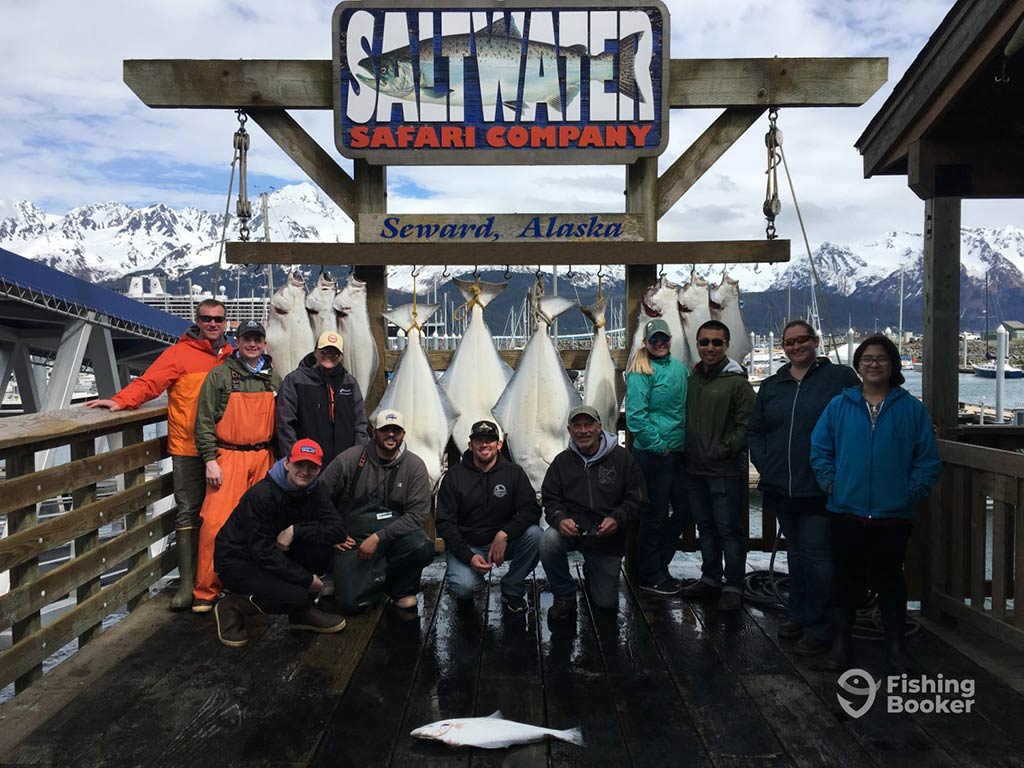
Photo courtesy of Saltwater Safari Company
Seward is among the best places to fish for Halibut in the world and it’s one of the most accessible, too. This is the southern terminus of the Alaska Railroad, making it an easy trip from Anchorage by train – or along the All-American Road. So pack your bags and set out towards one of the foremost Halibut destinations in the Last Frontier. You could be pulling in a chicken, a barn door, or something else entirely. Whatever fish ends up on your line, you’re in for an experience you’ll never forget.
Is Seward one of your preferred fishing spots in Alaska? Maybe you’ve had some luck in Homer? Whatever your thoughts, reach out to us in the comments below. We love hearing from you!
The post Halibut Fishing in Seward Alaska: The Complete Guide appeared first on FishingBooker Blog.
https://fishingbooker.com/blog/seward-halibut-fishing/
 CampingSurvivalistHuntingFishingExploringHikingPrivacy PolicyTerms And Conditions
CampingSurvivalistHuntingFishingExploringHikingPrivacy PolicyTerms And Conditions
